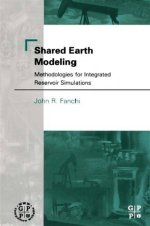
Shared Earth Modeling: Methodologies for Integrated Reservoir Simulations
Elsevier Science, GulfPP | 2002 | ISBN: 0750675225 9780750675222 | 547 pages | PDF | 13 MB
The primary goal of this book is to introduce the reader to the processes and concepts needed to develop shared earth models. This book is suitable for geoscientists and engineers with an interest in shared earth modeling, and professionals working in multidisciplinary asset management teams.
A Shared Earth Model (SEM) is a multidisciplinary representation of a subsurface resource. Shared Earth Modeling describes the process of integrating static and dynamic data from two or more disciplines to construct a model of a subsurface resource. Reservoir structure and fluid production are examples of static and dynamic data, respectively. The SEM evolves as static and dynamic data are acquired and integrated into the model.
This book can be used in multidisciplinary upper division undergraduate and graduate classes, continuing education classes, distance learning (remote or Intemet-based) courses, short courses, or self-study. The reader is exposed to topics from several disciplines that have a significant impact on the development of a SEM.
The book introduces the reader to the processes and concepts needed to develop shared earth models. Shared earth modeling is a cutting-edge methodology that offers a synthesis of modeling paradigms to the geoscientist and petroleum engineer to increase reservoir output and profitability and decrease guesswork. Topics range from geology, petrophysics, and geophysics to reservoir engineering, reservoir simulation, and reservoir management.
Table of Contents
Preface
Chapter 1. Introduction to Shared Earth Modeling
Chapter 2. Geology
Chapter 3. Petrophysics
Chapter 4. Well Logging
Chapter 5. Geophysics
Chapter 6. Fluid Properties
Chapter 7. Measures of Rock-Fluid Interactions
Chapter 8. Applications of Rock-Fluid Interactions
Chapter 9. Fluid Flow Equations
Chapter 10. Fundamentals of Reservoir Characterization
Chapter 11. Modern Reservoir Characterization Techniques
Chapter 12. Well Testing
Chapter 13. Production Analysis
Chapter 14. Reservoir Flow Simulation
Chapter 15. Reservoir Management
Chapter 16. Improved Recovery
References
Index
True PDF with TOC BookMarkLinks
Download:
Code:
http://uploaded.net/file/49xmmls6/4ervp.Shared.Earth.Modeling.Methodologies.for.Integrated.Reservoir.Simulations.pdf
==
http://rapidgator.net/file/58dd0981fd31b52453386b9a6bc44231/96d63768-deb0-4996-b046-6caeba6974e1.html
==
http://turbobit.net/02hehys767zy/4ervp.Shared.Earth.Modeling.Methodologies.for.Integrated.Reservoir.Simulations.pdf.htmlAttachments
-
You do not have permission to view the full content of this post. Log in or register now.